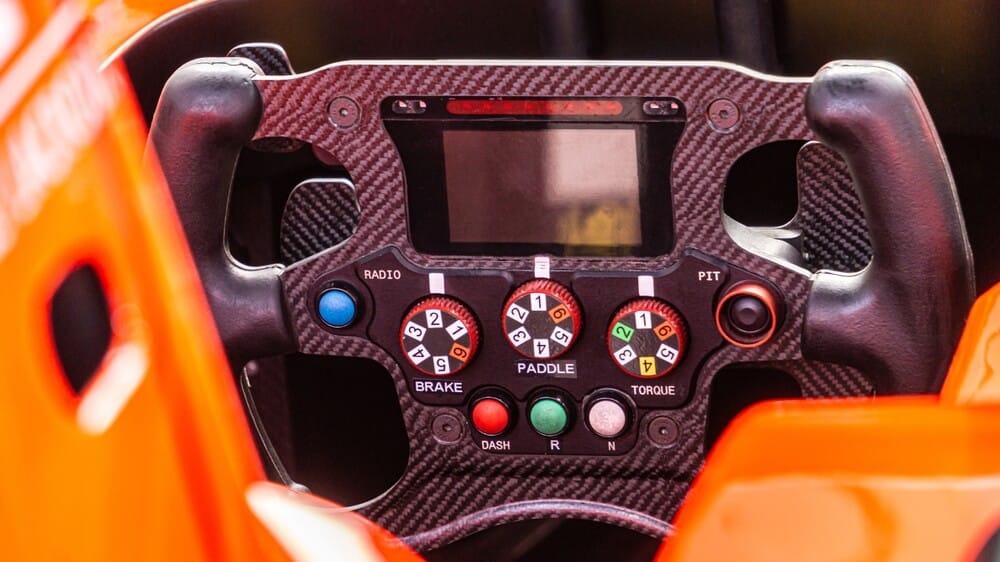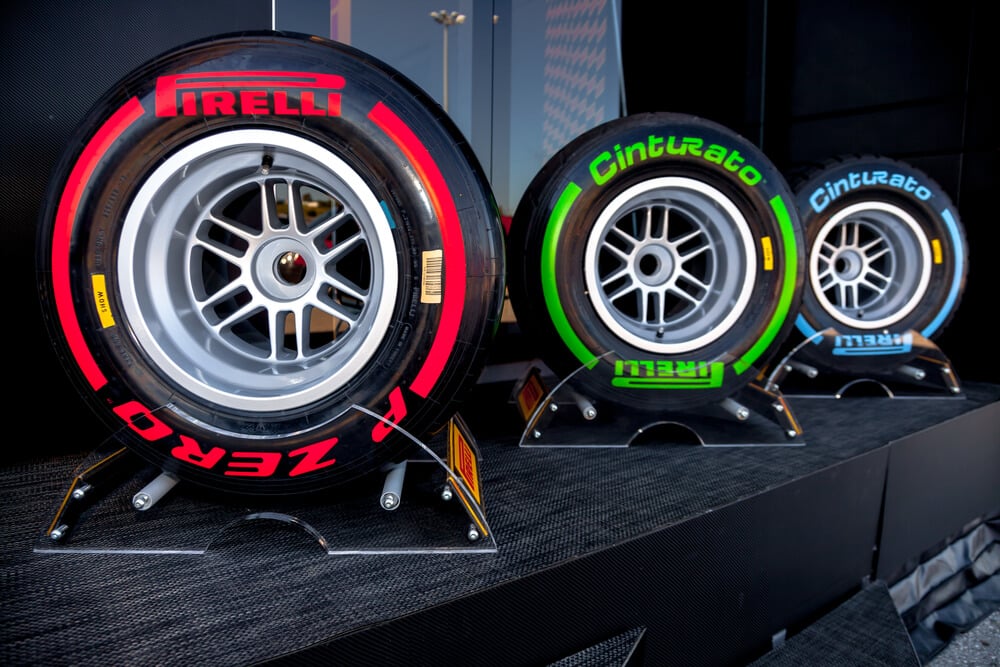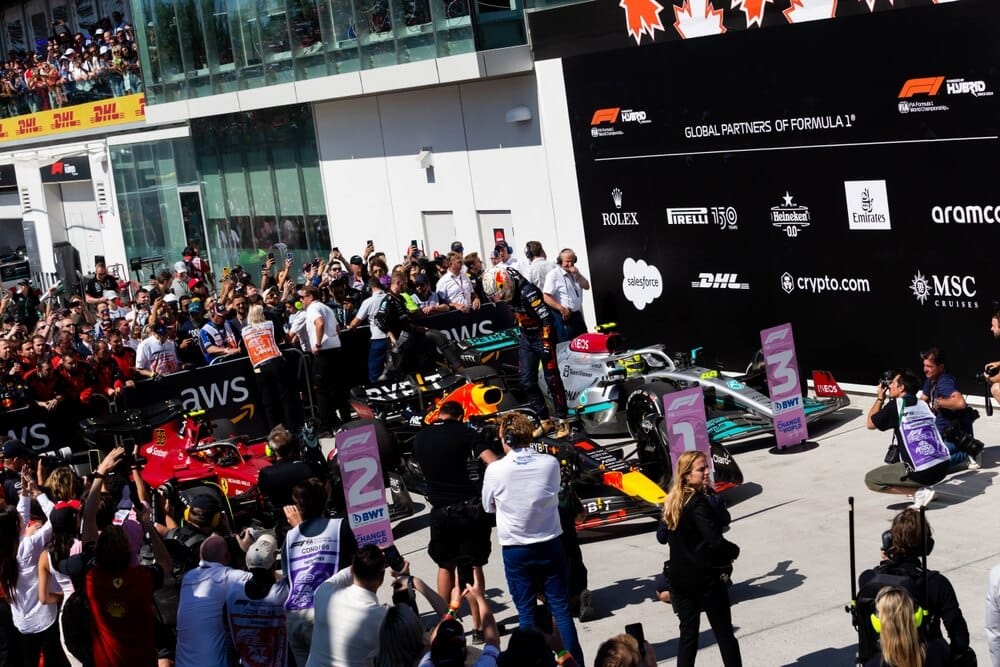Paddle shifters are an essential component of F1 cars. Their role in controlling gear changes is critical to the driver’s performance. In this article, we will discuss the different types of paddles, their functions, and their importance in F1.
Table of Contents
Watch this video to learn more about paddles on a F1 steering wheel.
The Role of Paddles in F1
Paddles are small levers located on either side of the F1 car steering wheel. Drivers use them to change gears. In modern F1 cars, paddle shifters have replaced traditional manual gear shifters, as they offer faster and more precise gear changes.
They allow drivers to change gears without taking their hands off the steering wheel. It makes the driver able to maintain better control of the car and focus on the race.
Benefits of Paddle Shifters
One of the key benefits of using paddle shifters is that they allow for faster gear changes. Traditional manual gear shifters require the driver to use a clutch pedal to disengage the engine from the transmission. That can take several seconds to complete. In contrast, paddle shifters use electronic actuators to change gears almost instantly, providing smoother and quicker acceleration.
Paddle shifters also allow drivers to shift gears while maintaining better control of the car. With traditional manual gear shifters, the driver needs to take one hand off the steering wheel to shift gears. That can be dangerous when driving at high speeds. Paddle shifters eliminate this problem by allowing drivers to shift gears without taking their hands off the wheel.
Types of Paddles in F1
There are two types of paddles used in F1: single-action and dual-action paddles.
Single-Action Paddles
Single-action paddles are the most common type of paddles used in F1. They require the driver to pull or push the paddle to shift gears. When the driver pulls the right paddle, the car shifts up a gear, and when they pull the left paddle, the car shifts down a gear. Single-action paddles are simple to use and offer precise control over gear changes.
Dual-Action Paddles
Dual-action paddles are less common but offer more control over gear changes. They allow the driver to shift up and down gears on the same paddle, depending on the direction they move it. For example, moving the paddle upwards may shift the car up a gear, while moving it downwards may shift the car down a gear. Dual-action paddles require more skill to use but offer greater flexibility and control.
Pull-Type vs. Push-Type Paddles
Another way to categorize paddles is based on their operation type. There are two types of paddle operation: pull-type and push-type paddles.
Pull-type paddles require the driver to pull the paddle to shift up a gear and push it to shift down a gear. These paddles are intuitive to use, as they mimic the natural motion of pulling a gearshift upwards and pushing it downwards.
Push-type paddles, on the other hand, work the opposite way. The driver needs to push the paddle to shift up a gear and pull it to shift down a gear. Push-type paddles are less common in F1 but offer a unique driving experience and may be preferred by some drivers.

Paddle Positioning and Design
Paddle positioning and design are crucial factors in F1 racing, as they can affect the driver’s performance and comfort level.
Positioning
Paddles are typically positioned on the steering wheel, within easy reach of the driver’s fingers. The exact position of the paddles can vary between different F1 teams, as each driver has their own preferences and needs. Some drivers prefer paddles that are closer to the top of the wheel, while others prefer them to be closer to the bottom.
The positioning of the paddles can also affect the driver’s comfort level. Paddles that are too far away or too close can cause discomfort or strain on the driver’s hands and arms, which can negatively impact their performance. F1 teams work closely with drivers to ensure that the paddle positioning is optimal for each individual driver.
Design
Paddle design is also important, as the shape and size of the paddles can affect the driver’s grip and control over the car. F1 paddles are typically made of lightweight and durable materials, such as carbon fiber, and feature ergonomic designs that fit the contours of the driver’s fingers.
The size of the paddles can also vary depending on the driver’s needs. Some drivers prefer larger paddles that provide more surface area for their fingers to grip, while others prefer smaller paddles that offer greater precision and control.
Paddle Operation and Technique
In recent years, there have been several innovations related to paddles in F1 that have improved the performance of the cars and the driving experience for the drivers.
Hybrid Power Units
The introduction of hybrid power units in F1 cars has changed the way paddles are used. Hybrid power units use a combination of an internal combustion engine and an electric motor to power the car. Paddles are used to control the electric motor, which can provide an extra boost of power when needed.
The use of paddles to control the electric motor has made F1 cars more fuel-efficient and environmentally friendly, while also providing an additional challenge for the drivers.
Haptic Feedback
Haptic feedback is a technology that provides tactile feedback to the driver through the paddles. This technology allows drivers to feel the gear changes through their fingers, providing a more immersive driving experience.
Haptic feedback can also be used to alert the driver when they are approaching the rev limit or when the car is about to shift gears. This helps the driver to maintain optimal engine performance and avoid costly mistakes.
Frequently Asked Questions
1. What are paddles in F1?
2. How do paddles work in F1 cars?
3. What is the difference between single-action and dual-action paddles in F1?
4. Can F1 drivers customize the positioning and design of their paddles?
Conclusion
In conclusion, paddles are an essential component of F1 cars, and their role in controlling gear changes is critical to the driver’s performance. There are two types of paddles used in F1: single-action and dual-action paddles. Paddle design and positioning are important factors that can affect the driver’s comfort and control over the car. Innovations such as hybrid power units and haptic feedback have improved the performance of F1 cars and the driving experience for the drivers.
As a specialist in F1 paddles and a professional editor, I hope this ultimate guide to paddles in F1 has provided you with a deeper understanding of their importance and function in F1 racing. Whether you are a racing enthusiast or just curious about the world of F1, I hope this article has been informative and engaging.
Article sources
Learn more about Formula One
Want to learn more about F1? Then visit our Formula 1 glossary and dictionary.



